AMD Gaming Platform
When we leave the budget sector behind and start looking at midrange configurations, the amount of customization that can be done becomes far more significant. We basically doubled our budget, but that doesn't mean you actually have to spend anywhere near $1500 to get a reasonable midrange configuration. It should be quite easy to cut back a few areas in order to get the price closer to $1000, if that's the target budget. For the AMD platform, we decided to focus on putting together a good gaming solution.
| AMD Gaming System |
| Hardware |
Component |
Price |
Rebates |
| Processor |
Athlon 64 X2 4800+ (Windsor 2.5GHz 2x512K) - Retail |
$133 |
|
| Motherboard |
EVGA 122-M2-NF59-TR (Socket AM2 nForce 590 SLI) |
$136 |
$30 |
| Memory |
Transcend JETRAM 2x1GB DDR2-800 (5-5-5-12 JM2GDDR2-8K) |
$113 |
|
| Video Card |
Foxconn GeForce 8800GTS 640MB (FV-N88SMBD2-ONOC) |
$400 |
$40 |
| Hard Drive |
Seagate Barracuda 7200.10 ST3320620AS 320GB 16MB |
$80 |
|
| Optical Drive |
Pioneer Black DVR-112D 18X DVD+R |
$38 |
|
| Case |
Athenatech A5719BB.500 with 500W PSU |
$106 |
$20 |
| Display |
Acer AL2216Wbd 22" 5ms (1680x1050) |
$274 |
|
| Speakers |
Logitech X-530 5.1 70W Speakers |
$74 |
|
| Keyboard and Mouse |
Microsoft Comfort Curve 2000 B2L-00047 |
$28 |
|
| Operating System |
Windows MCE 2005 or Vista Home Premium (OEM) |
$115 |
|
| Bottom Line |
|
$1497 |
$1407 |
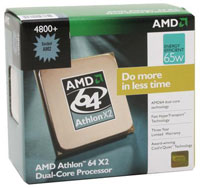 |
CPU performance can still be a factor in many games, particularly RTS games where lots of units might be in action at the same time, but graphics horsepower is still far more important in the majority of titles. We made a moderate upgrade to the processor selection, going with the Athlon X2 4800+. That should offer more than enough power for any current games, and it leaves us plenty of money to spend on the GPU. Overclocking is always an option, although most AMD AM2 processors seem to top out in the range of 2.6-2.8GHz so we would either go with a less expensive CPU for overclocking purposes or else simply spend the extra money in order to get a guaranteed minimum performance. If you want something faster than a 4800+ and you don't want to move to Core 2 Duo, the 5400+ is worth a serious look. Priced at $200, that processor comes with 1MB of L2 cache per core and a default clock speed of 2.8GHz - basically what used to be the $1000 FX-62. Just don't expect it to greatly improve your gaming performance except at lower resolutions/detail settings.
 |
For the motherboard, looking at prices we decided the ability to support dual X16 PCI-E slots was a reasonable addition, as the price isn't much higher than the dual X8 PCI-E alternatives. The nForce 590 SLI chipset has been well-regarded since its launch last year, and prices on such boards have dropped substantially. This also gives us the option to move up to SLI graphics cards in the future to improve performance, and while that tends to be beyond the realm of midrange computers it's not inconceivable that some people will want to spend a couple hundred dollars a year from now to improve performance. Taking a look at the current 590 SLI motherboard offerings, EVGA comes out on top with some of the best features while maintaining the lowest price - under $100 after rebate! The EVGA motherboard is actually the same reference design as the Foxconn nForce 590 SLI board that garnered our Silver Editors' Choice award last year, right down to the inclusion of FireWire 1394b support, and it costs $35 less than the Foxconn board before rebates.
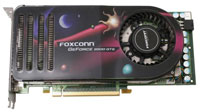 |
As we mentioned, the graphics card is going to be the primary concern in just about any gaming system. Right now, without blowing our budget by moving up to the 8800 GTX, the GeForce 8800 GTS is the most reasonable solution. Having settled on that chip, you then need to decide whether you want to get the more expensive 640MB version or stick with the basic 320MB offering. There are several games out that are using a lot of textures, which can start taxing 512MB cards, so opting for the larger memory version seems to make the most sense in terms of serious gaming. It's also a lot easier to find factory overclocked cards in the 640MB models without paying too much of a price premium. The Foxconn 8800 GTS comes clocked at 575/1800 (stock is 500/1600) and after rebates it ties several other cards as being the cheapest 8800 GTS 640MB. Lowest priced card with higher factory clock speeds? We'll take it, especially considering all of the GeForce 8800 cards use the same NVIDIA supplied circuit board, so the only real differences will be factory clock speeds, warranty/support, and potentially modified cooling solutions. XFX and EVGA may come with better warranty policies, but Foxconn certainly isn't a bad company to deal with in our experience.
Before you rush out and purchase this particular graphics card, however, it is worth noting that AMD's new Radeon X2900 XT/XTX cards are scheduled to launch in the next month. The rumors have it that these cards will offer performance better than the 8800 GTX at prices starting around $400 for the XT model. Whether or not the availability and drivers are going to be up to snuff is a complete unknown - NVIDIA is still working on G80 driver issues, particularly in regards to Windows Vista, and we don't have any DirectX 10 enabled games yet - but it certainly wouldn't hurt to wait another month and see what happens. Should you choose to get one of the new AMD graphics cards, you might also want to skip the EVGA SLI board and pick up an ASUS M2R32-MVP 580X CrossFire enabled motherboard instead.
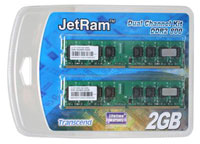 |
For the memory, this time we did upgrade to 2GB of RAM. We didn't bother with anything fancy - 5-5-5-12 memory is only a few percent slower than 4-4-4-12 memory and costs quite a bit less - and again we are quite pleased to see that memory prices have dropped a long way since the beginning of the year. Transcend JETRAM is one of the many memory providers that offers "average" performance. If you're looking to set speed or overclocking records, you could certainly spend more money and get RAM that is capable of running at much higher clock speeds with better timings, but for the cost you would be far better off spending the extra money on a faster graphics card or processor first. We generally only recommend exotic memory solutions for the high-end market.
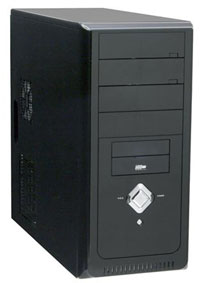 |
Most of the remaining components have received minor upgrades relative to our entry level configurations. The hard drive is slightly larger, we chose 5.1 speakers, and we selected a different case with a "more powerful" power supply. The power supply probably isn't all that great, but if you aren't going to push your system with overclocking, multiple graphics cards, or a bunch of hard drives the 500W PSU included with the Athenatech case will work fine.
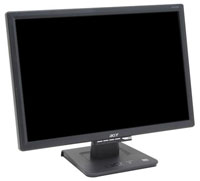 |
The display once again presented us with a dilemma: do we want to go with a higher quality offering or do we want a larger display? In reality, most of the 22" and smaller LCDs tend to have fewer features and lower quality. For example, TN panels are standard on every 22" LCD we've seen so far, and they are also used on most of the other smaller displays. It's possible to find S-PVA panels on some of the 20" displays, but you will end up paying more than the 22" Acer that we selected. The AL2216W is a decent quality display, and the price makes it particularly attractive. Acer also has a newer and slightly less expensive AL2223W offering, although that is a 6-bit panel that approximates 16.2 million colors via dithering whereas the AL2216W is an 8-bit panel.
















46 Comments
View All Comments
Gary Key - Friday, April 20, 2007 - link
We debated this choice. We feel like the Biostar 690G board is an excellent choice and is probably our favorite 690G board although the Sapphire board has been impressive with the latest BIOS release. The debate originally was to spend a little less on the Asus board and get the 3800+ X2 instead of the 3600+ X2, in the end it was the Asus/3600+ and moving up to a nice 19" monitor to come in under $700.OrSin - Friday, April 20, 2007 - link
Sorry but buying the slow C2D and then pairing it with $70 HSF to me is counter productive. Why spend almost 60% of the CPU+hsf combo on cooling. The intel stock cooler with a faster CPU will still OC fine and get to atleast the same speeds and the 4300. With more head room and lower voltage. Also their are several after market HSF that cost under $30 that work great. Sorry I dont see paring this monster HSF with the lowest CPU.iluvdeal - Monday, April 23, 2007 - link
I'm thinking the same thing, the escalating cost of some HSFs are muting the price/performance you are getting out of your CPU. You might as well spend that extra $70 on a higher CPU and just use the stock HSF.Maybe AnandTech can do an article involving much overclock you get for your money? For example, if you can achieve a 20% OC for "free" using the stock HSF, how does that overclock increase as the price of the HSF goes up?
AnnonymousCoward - Sunday, April 22, 2007 - link
60%? Try 34%. 70/(135+70)MarxMarvelous - Friday, April 20, 2007 - link
I agree - especially when you can get a Scythe Ninja for $40.http://www.newegg.com/product/product.asp?item=N82...">http://www.newegg.com/product/product.asp?item=N82...
JarredWalton - Friday, April 20, 2007 - link
Different strokes for different folks....I like to get a top-quality HSF if I'm serious about overclocking, and I'd say there's a reasonable chance you *won't* get 3.6GHz out of the E4300 without it - about 50/50 depending on CPU. As for cost, an E6400 with Scythe Ninja as an example will end up costing a bit more, but to 3.6GHz you will also need a board and RAM that can run at 450 FSB/DDR2-900 without issues. More likely than not, you will end up spending more money on the RAM just to be safe, and in the end performance is about the same.
Anyway, we have our separate review sections for a reason, and people still don't come to a single consensus on individual parts. When you have to then put together a complete build, every little decision can be debated. Going with a Tuniq 120 for $50 seems like a better idea than a Scythe Ninja if you don't want the Ultra 120. I just like the fact that you get to choose a fan that suits your needs with the Ultra 120 - either for quiet or for maximum OC or somewhere in between. The heatsink only runs about $50, but I figured another $10-$20 for the fan is typical.
OrSin - Friday, April 20, 2007 - link
Oh yeah still good article. It give people a very good picture of where things are.mostlyprudent - Friday, April 20, 2007 - link
Did I miss it, or is there no discussion of the Raidmax case in the article? Anyone know which brand PSU that case uses?Zepper - Sunday, April 22, 2007 - link
The PSU in the Raidmax Apex - I can't read the "E" number under the RU seal so I could check it out on the UL.com site. IAC, it's a junk-bucket with less than half its watts available on its one +12 rail - not even designed for a modern system where the 12V rail is king. For some reason Jarred never acts as if the PSU is the cornerstone of a stable system. I'd be ashamed if I was Jarred.He got lucky on the fancer system as the PSU in the Athenatech is made by Topower. Not great by any stretch, but not a junk-bucket either.
.bh.
Chunga29 - Sunday, April 22, 2007 - link
It's a budget PC for God's sake! Look at the components and tell me with a straight face that even a low-end PSU is going to fail to provide enough power. If you can do that, then I have the name of a shrink that can help with your uhnealthy PSU obesession. IGP + no overclocking + 1 drive = about 110W power draw.